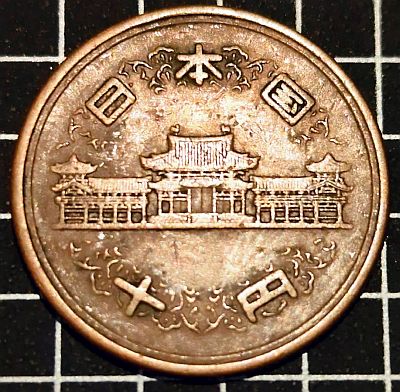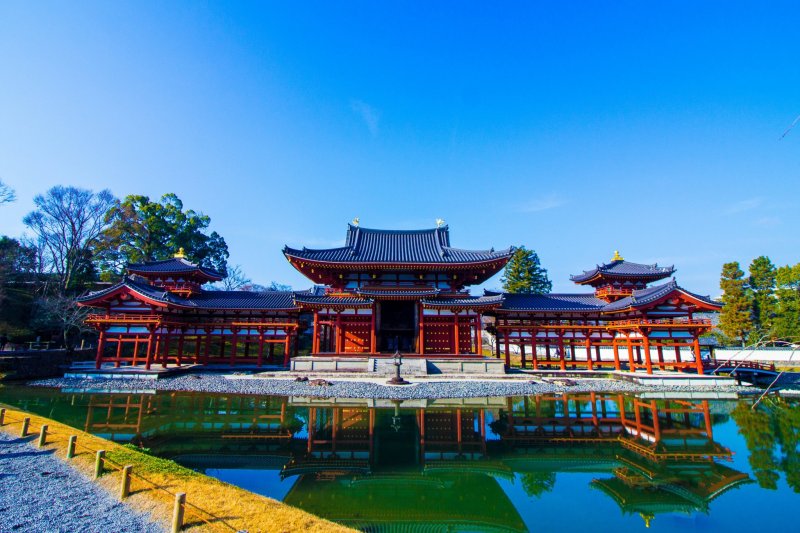A coin of rebuilding.
Shōwa Era
The reign of Emperor Hirohito lasted from 1926 – 1989. The era name, “Shōwa”, means “Enlightened Peace” from the Chinese Book of Documents.
In World War 2, Japan joined the Axis powers of Germany and Italy. The end of the Pacific war came when Japan accepted the terms of the Potsdam Declaration on 15 August 1945 (Showa 20). Japan then was placed under the occupation of the Allied Powers, led by the United States.
Japan was a devastated country at the time of its surrender in August 1945. More than 2.5 million Japanese, including more than 500,000 civilians, had perished since Pearl Harbor. Major parts of Tokyo and many other cities had been burnt to ashes. This included the atomic bombing of Hiroshima and Nagasaki. One third of the nation’s wealth had been destroyed. According to America’s initial Post-Surrender Policy for Japan, the ultimate objective of the occupation was, “to ensure that Japan will not again become a menace to the United States or to the peace and security of the world.” The Japanese military was completely disarmed but Hirohito remained as Emperor. While top US officials at the time were sharply divided on the issue, it seems likely that allowing Hirohito to remain aided support for surrender and for reforms following the war.
The following years were marked by reforms based on policies of demilitarization and democratization. Japan’s initial postwar election held in April 1946 (Showa 21), saw women exercise their franchise for the first time.
Part of the rebuilding of Japan after the war was rebuilding the economy. Suffering inflation, lack of employment and very little infrastructure, allied attention shifted from demilitarisation to helping the economy. The Korean War in 1950 had the side effect of boosting Japan’s industry. Becoming the world leader in shipbuilding supplies, other industries benefited as well. Companies including Honda, Toshiba and Sony were all born out of the post-war industrialisation in Japan.
In 1949, the Yen was pegged to the US dollar at 360 Yen per dollar. In the early 1950s, new coins were issued, and by the end of the 1950s, the designs were set which would be used through to today.
Obverse

The obverse features Phoenix Hall (Hōō-dō, Byōdō-in Temple). The country name is on top and value below.
The Hō-ō-dō or Phoenix Hall is the main temple of the Byodoin monastery. It is located in Uji which is south of Kyoto. Uji is famous for its green tea, rich history and association with Japan’s first novel, the Tales of Genji.
Phoenix Hall was originally a country palace for the Fujiwara clan. It was converted to a temple by Yorimichi Fujiwara to enshrine the Buddha Amida.

(Phoenix hall, surrounded by lake and gardens. Photograph: JapanTravel.com)
Built in 1053, it is almost the sole surviving example from the Heian Period.
Reverse

The reverse features the “Value and date within wreath“. The value on this side is in western Arabic: “10”.
This particular coin was issued from 1951 (Shōwa 26) through to 1958 (Shōwa 33) with a reeded edge. The coin was then changed to feature exactly the same design, metal (bronze) and dimensions (4.5g weight, 23.5mm diameter), but with a smooth edge.
The coin was minted at Japan Mint (独立行政法人造幣局 / Dokuritsu Gyōsei Hōjin Zōheikyoku), Japan.
Japan Mint was established in Osaka by the Meiji government in order to modernize the coinage system. The inaugural ceremony was held on April 4th,1871 and minting was commenced with Western style facilities that were epoch making in Japan in those days.
I’m not sure which branch minted this particular coin, but I think one of the most astounding facts about the Japan mint relates to the Hiroshima plant: “The minting of coins was temporarily begun in Hiroshima City in February 1945.
Shortly thereafter (August) Hiroshima city was destroyed by the atomic bomb and the production of coins was discontinued. However, in January 1946 coinage operations were resumed at the present address.
Despite the disastrous decisions made by Japan going into WW2, I find coins from when a country is rebuilding force you to pause and consider. These to me, are representative of a resilient and proud people. The temple on the obverse a symbol of peace, and longevity. What is your favourite coin from a country’s rebuilding phase? Let us know below.


Leave a Reply